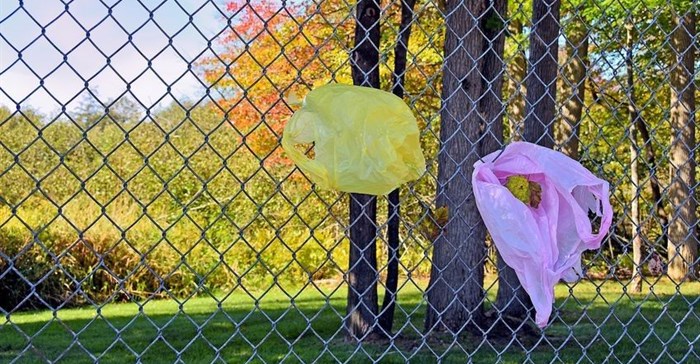Why adopting biodegradable plastic bags in Kenya may not work

One possible substitute is biodegradable plastic bags. Over the last 25 years plastics that are easily biodegradable have increasingly been seen as a more environment-friendly alternative to conventional plastic packaging. Their use has slowly gained prominence in a number of developed countries.
But, at the moment, a number of factors stand in the way of this approach being successful in Kenya. Two in particular stand out: Kenya’s biodegradable plastic bag sector isn’t ready to produce the range of bags currently available, and the distribution points – mainly supermarkets – don’t make sense for most Kenyans. My research found that only about 42.5% urban Kenyans shop in supermarkets. The majority shop in open air markets.
The country has been here before: nearly 10 years ago it set down rules about how thin bags had to be, and imposed a heavy excise duty. The effect wasn’t what the government had hoped for. Instead, high costs, poor performance, a lack of manufacturing capabilities and local perceptions have all prevented them from taking root.
If the biodegradable route is going to work the Kenyan government needs to do a lot more to support it.
Kenya has been here before
Biodegradable plastic bags have been on the scene in Kenya since 2008, when the government imposed a ban on the manufacture of bags less than 30 micron thick and instituted an excise duty of 120%. Due to concerted lobbying by the Kenya Association of Manufacturers, this ban was later abandoned.
While the initiatives were initially greeted with a lot of enthusiasm and excitement, it didn’t last. The impact on the packing industry was severe. Most producers couldn’t keep up with the change. Over time, Packaging Industries Limited, one of country’s main plastic bag producers, became the sole producer of biodegradable plastic bags to be used as shopping bags.
But the company could only produce three different bag sizes, sold between USD$0.5 and USD$1 per bag compared to the regular plastic bags that are given freely. They were supplied to just one retail outlet in Kenya. This is still the situation today.
The result was that the anticipated shift in favour of biodegradable plastic bags didn’t happen.
There are several reasons for this.
More than half of Kenya’s urban shoppers buy their food in open markets. Yet supermarkets are the only point of contact with consumers for biodegradable bags. Exposure to them has only been for a small percentage of consumers – those that shop at supermarkets and, in particular, those who shop at Kenya’s Nakumatt Holding.

Even among this cohort of shoppers, very few use biodegradable plastic bags. My research showed that only 1.6% of supermarket shoppers have ever bought a biodegradable plastic bag.
Why?
There could be several reasons for this low adoption.
The first is cost. Biodegradable plastic bags are expensive for most Kenyans. The cost of the smallest size bag is equivalent to a 400g piece of bread. The price is unlikely to come down as the government doesn’t set unit prices and production isn’t subsidised.
Secondly, choices are limited. The bags only come in three sizes which is very limiting for consumers.
Thirdly, their use would require a major change in shopping habits. This is a real barrier. For example, my research showed that only 20% of the shoppers I interviewed remembered to carry an old bag for reuse on their next shopping trip.
Fourthly, there are concerns over the life span, or degradability, of the bags manufactured in Kenya. My research shows that local bags currently referred to as biodegradable, only degrade between 40%-60%, instead of completely, after 90 days of being subjected to composting.
Another factor getting in the way of uptake is that the production of biodegradable plastic is very low – across the world. Current global production is around 350,000 tons – less than 0.2% of the production of petrochemical-based plastics.
One of the reasons for this is that biodegradable plastics are more expensive to produce because of the extra steps required in the process.
What needs to be done
The Kenyan government could take a number of steps to jump start the culture of using biodegradable plastic bag. These include:
- Channelling the money they’ve raised from the excise duty to support the development and research of alternatives, such as sisal bags.
- Getting supermarkets to take more responsibility in increasing the use of biodegradable plastic bags.
- Providing incentives, including tax rebates, to encourage more manufacturers to enter the sector. At the time of my study there was only one external supplier of raw material, one manufacturer and one retailer.
- Offering free biodegradable bags to consumers at the initial stage to encourage their use.
- Creating networks among governmental actors (for policy and technical support), producers, consumers and others such as lobby groups and the media. They need to work together to support and disseminate information about the bags
- Developing the proper know-how. Research organisations and universities need to be part of this development by improving the quality of bags so that they can get their market and consumption niche.
![]() The steps needed to achieve these goals are huge. But Kenya needs to resolve these technical and economic issues before biodegradable plastics can be seen as a viable alternative.
The steps needed to achieve these goals are huge. But Kenya needs to resolve these technical and economic issues before biodegradable plastics can be seen as a viable alternative.
Source: The Conversation Africa

The Conversation Africa is an independent source of news and views from the academic and research community. Its aim is to promote better understanding of current affairs and complex issues, and allow for a better quality of public discourse and conversation.
Go to: https://theconversation.com/africa





















